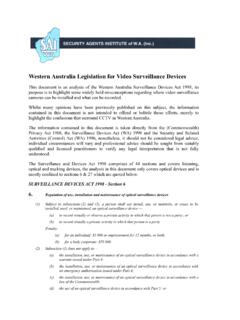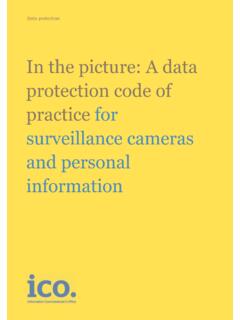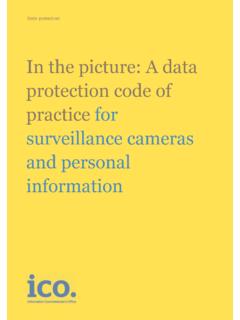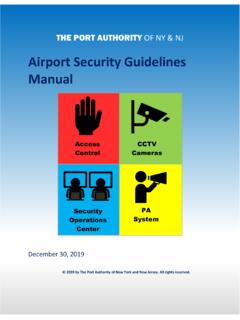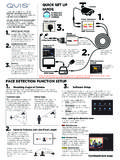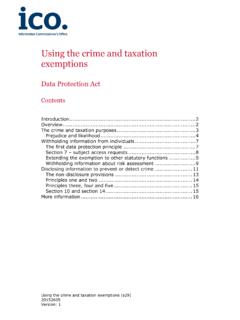Transcription of Current practices in electronic surveillance
1 Vienna International Centre, PO Box 500, 1400 Vienna, Austria Tel.: (+43-1) 26060-0, Fax: (+43-1) 26060-5866, UNITED NATIONS USE ONLYU nited Nations publicationISBN ???-??-?-??????-?ISSN ????-????Sales No. (E/NA)Printed in October 2009 500 Current practices in electronic surveillance in the investigation of serious and organized crimeUNITED NATIONS OFFICE ON DRUGS AND CRIMEV iennaCurrent practices in electronic surveillance in the investigation of serious and organized crimeUnited nationsnew York, 2009 UNITED NATIONS PUBLICATIONS ales No. 978-92-1-148246-1iiiContents 1. INTRODUCTION .. 1 The issue .. 1 electronic surveillance .. 2 The process .. 2 Objectives .. 3 Scope .. 3 Structure .. 4 Definitions .. 4 2. MULTILATERAL AND INTERNATIONAL APPROACHES AND ISSUES.
2 7 The international framework .. 7 Cross-border cooperation .. 9 Cross-border cooperation: jurisdictional issues and challenges . 9 Intangible data held on computer networks spanning several countries .. 10 Mutual legal assistance treaties (MLATs) .. 10 Multilateral agreements .. 10 Other networks and programmes .. 11 3. REgULATION: wARRANTS AND AUTHORIzATIONS .. 13 when is a warrant or authorization required? .. 13 The applicant .. 14 The authorizing body .. 15 who authorizes the use of electronic evidence gathering techniques? .. 15 Surreptitious electronic evidence gathering by consent .. 16 Notice .. 17 Contents of warrant application .. 17 Justification for warrant.
3 18 what a warrant authorizes .. 19iv Scope .. 19 Duration .. 21 Use of surveillance data .. 21 Use of surveillance data: intercepted communications .. 21 Transcription .. 22 Information obtained about persons or offences not the subject of the warrant .. 23 Chain of custody .. 23 Reporting requirements .. 24 Reports to issuing judge .. 24 Annual reports .. 25 Implications of non-compliance .. 25 Emergency or urgent circumstances .. 26 4. OTHER PRINCIPLES gOvERNINg electronic EvIDENCE gATHERINg by LAw ENfORCEMENT .. 29 Reasonable expectancy of privacy .. 29 Right to respect for private life in the European Court of Human Rights .. 30 5. ADDITIONAL POLICy CONSIDERATIONS.
4 33 Regulation of other users of electronic surveillance : private security .. 33 Regulating the use of changing technologies .. 33 6. ADDITIONAL CHALLENgES .. 35 Resource constraints .. 35 Training .. 35 Technological challenges .. 36 Telephone number portability and roaming .. 36 Email, chat and voice over internet protocol (vOIP) .. 36 Pre-paid mobile telephones and internet caf s .. 37 Telecommunications service providers .. 37 Tracking .. 38 7. REqUEST fOR COMMENT .. 3911. the issueThe value of employing electronic surveillance in the investigation of some forms of serious crime, in particular organized crime, is unquestionable. It allows the gathering of information unattainable through other means.
5 Some countries have utilized surreptitious electronic surveillance for nearly a century. for others it is a more recent phenomenon, and for some it is not yet utilized at all. The use by law enforcement of electronic surveillance should not be an investigative tool of first resort, instead its use should be considered when other less intrusive means have proven ineffective or when there is no reasonable alternative to obtain crucial information or evidence. Even when electronic surveillance is appropriate, it will generally need to be used in conjunction with other investigation methods in order to be most those jurisdictions without any regulation, or with legislation which is lacking in some respect, the challenge is to develop a balanced system for the use of electronic evidence gathering.
6 The balance which needs to be struck is that between the effective use of electronic evidence gathering and the protection of citizens rights. This includes balancing the cost of utilizing these methods against the ultimate public benefit gained from a conviction. These considerations should be weighed carefully by legislators, prosecutors, law enforcement and the like. It should also be noted that in some countries the existence of a federal system of gover-nance means that electronic surveillance can be regulated at both a local and at a national level. federal law will often apply where the investigation is into crime that crosses borders, however, organized crime is of course also investigated by local law enforcement. It is not possible for this document to comprehensively consider regulation of individual states, regions or provinces within countries, although their mention will occur where valuable examples arise.
7 2 Current practices In ELEC tronIC surveillance In tHE InVEStIGAtIon oF SErIouS orGAnIZEd electronic surveillanceThe term electronic surveillance covers an array of capabilities and practices . To better understand what is meant by electronic surveillance , it is useful to break it down into parts. surveillance has previously been defined on the basis of covert/overt distinctions, or determined according to the level of contact with the target, whether remote or direct. These distinctions might, arguably, create a false dichotomy, particularly in the context of modern surveillance technologies, where overt/covert lines are not as easy to draw. Thus, a framework based on function is perhaps more useful. The table below provides some examples. Although this too is flawed in that modern surveillance technologies will often have multiple capabilities (see below discussion at section on regulating technologies with multiple capabilities).
8 Audio surveillanceVisual surveillance Tracking surveillanceData surveillance video surveillance positioning systems (GPS) (spyware/cookies).Voice over internet protocol (VOIP).In-car video devices (room bugging).Body-worn video frequency identifi-cation devices (RFID).Keystroke imaging/forward looking infrared. Biometric information technology (retina scans at airports etc). document confines its consideration of surveillance practices to electronic surveillance and not other forms of surveillance such as the use of covert operatives. Thus, for the purposes of this document, the terms surveillance and electronic surveillance are synonymous and used the processIn December 2007 the United Nations Office on Drugs and Crime (UNODC) com-menced the first of a series of meetings with expert representatives from law enforcement and prosecutorial and judicial authorities of Member States.
9 The first informal expert group meeting on electronic evidence gathering was held from 3-5 December 2007 at the vienna International Centre. A second regional expert group meeting for South-East Asian countries was held 17-18 March 2009 at the Digital forensic Centre in Seoul. The meetings each brought together a small group of law enforcement officials and legal experts from different countries and regions. It is anticipated that more regular expert group meetings are to initial goal of these meetings was to utilize participants expertise and experiences to develop a training manual for electronic surveillance . However, due to the complexity of 3 IntroduCtIonthis issue, it was decided that as a first step it would be useful to draft a comparative study of surveillance regulation and practices , drawing primarily upon the expert group meetings but also by completing more general research in the area.
10 The document will broadly outline the use of and challenges faced by law enforcement and investigative authorities in a range of jurisdictions in the collection, use and storage of electronic evidence through objectivesThe purpose of conducting a comparative study of electronic evidence gathering is to outline Current practices that will serve as an important reference tool for Member States in the regulation and use of electronic evidence gathering in the investigation of serious crime. Essentially, this document aims to: Contribute to an improved understanding of the global practical and legal issues presented by the use of electronic surveillance in evidence gathering, handling and an account of the challenges faced by law enforcement and investigative authorities in the use of electronic evidence gathering in the investigation of serious crime.










